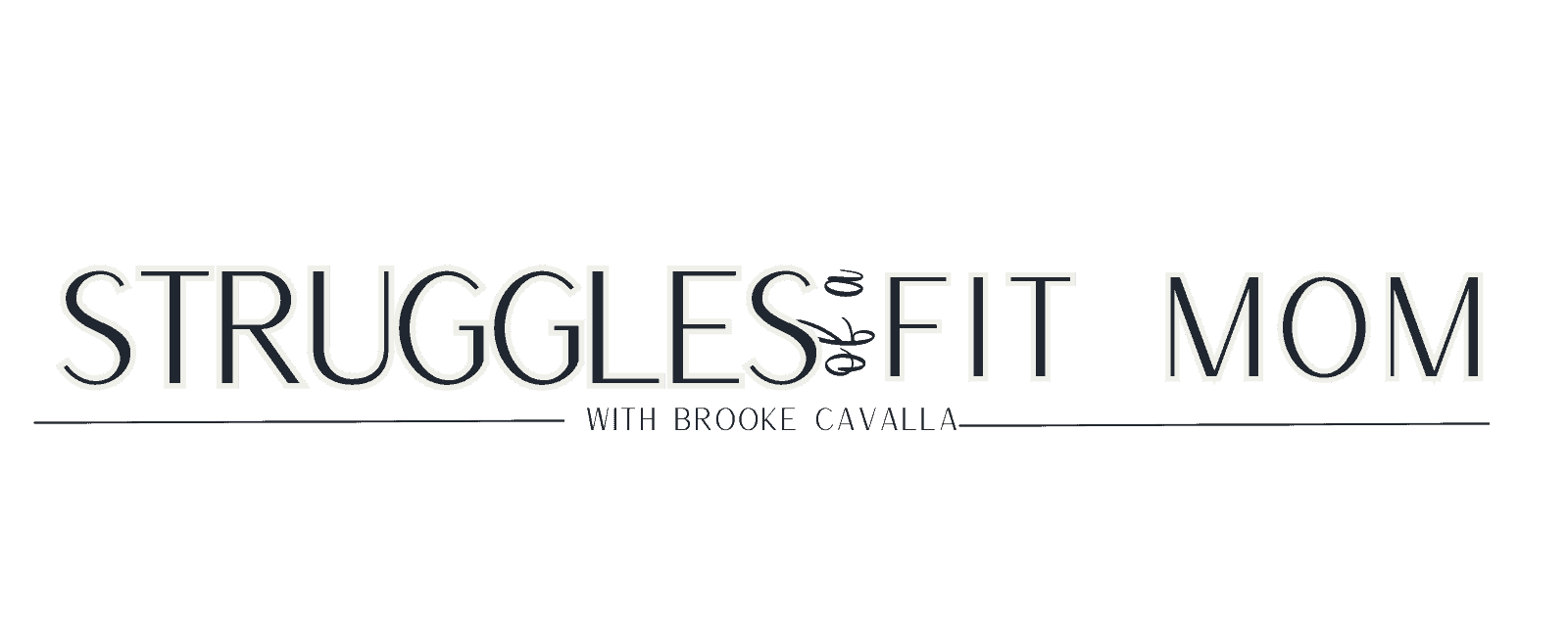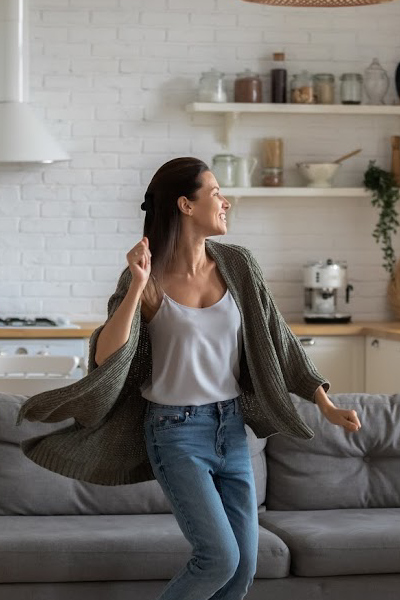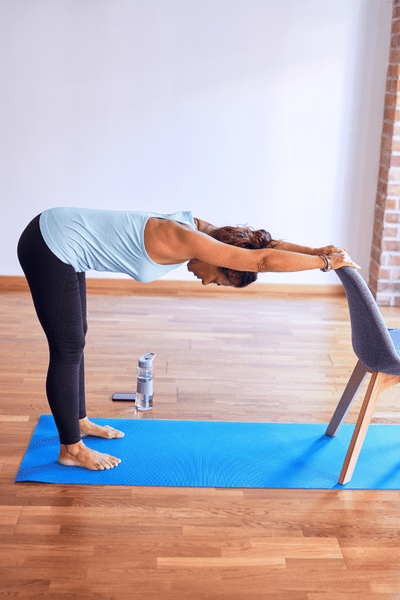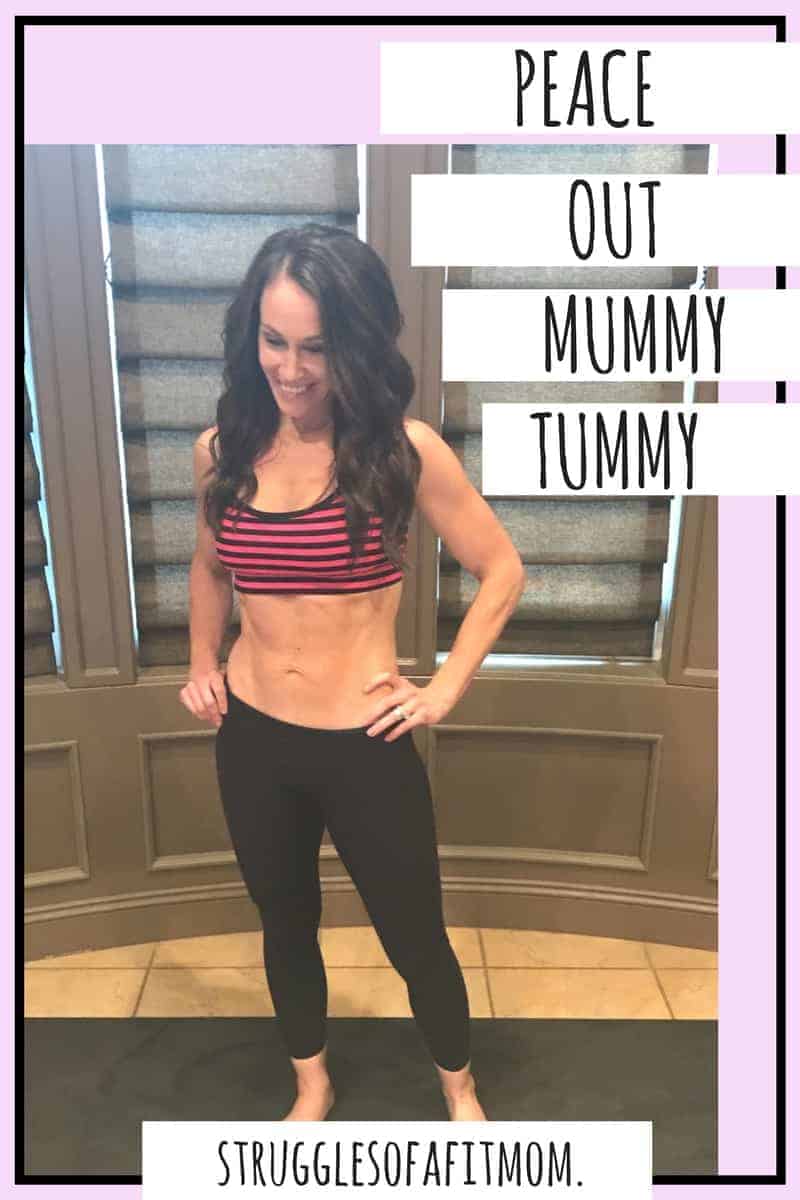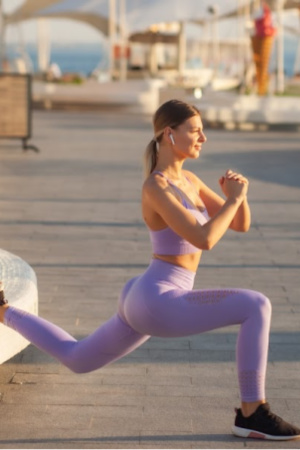21 Best Glute Medius Exercises for a Strong, More Balanced Body
Are you looking to develop a strong, well-defined “glute shelf”?
You know, the kind that looks good in jeans and makes your booty look perky?
Today you will learn exactly how to enhance the appearance of your backside with a strong, defined glute shelf.
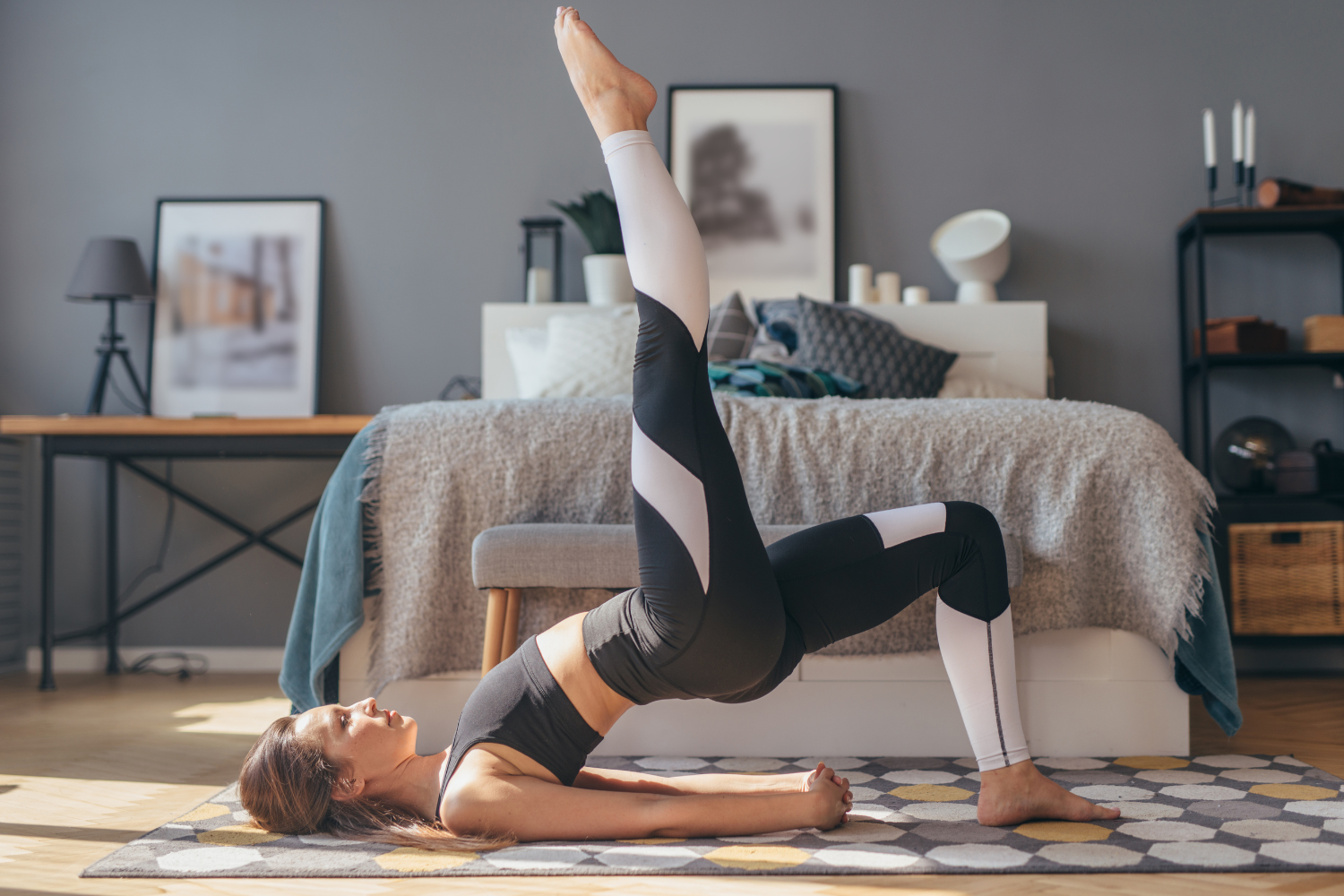
THE BEST UPPER GLUTE EXERCISES FOR WOMEN
You might call it the “glute shelf” but in my world, we call it the “glute medius.”
This is the muscle you need to focus on if you want to build the coveted glute shelf.
And while having a shapely derriere is what brought you to this post, I must point out that having strong glutes is vital for hip stability, better posture, balance and everyday movements such as walking or climbing stairs.
But this muscle can be difficult to target with traditional glute exercises.
That is why I put together this post which includes a little anatomy lesson as well as the best exercises to specifically target this muscle.
Because with a proper understanding of the anatomy, form, and technique for each exercise, you can ensure that your efforts will be rewarded with a shapely, defined backside.
Here is what we will cover:
- A brief summary of what muscles make up the upper glutes
- Why strong upper glutes are important (outside of aesthetics)
- The best exercises to build your upper glutes
- Exactly how to build bigger upper glute muscles
- 3 upper glute workouts to develop your glute shelf
What Are the Muscles at The Top of Your Glutes?
When most people think of the glute muscles, they most often only think of the gluteus maximus – the largest of the three glute muscles.
It also happens to be the biggest muscle in the body.
The glute max gets all the attention for it’s large, round shape.
However, there are actually three main muscles that make up the glutes:
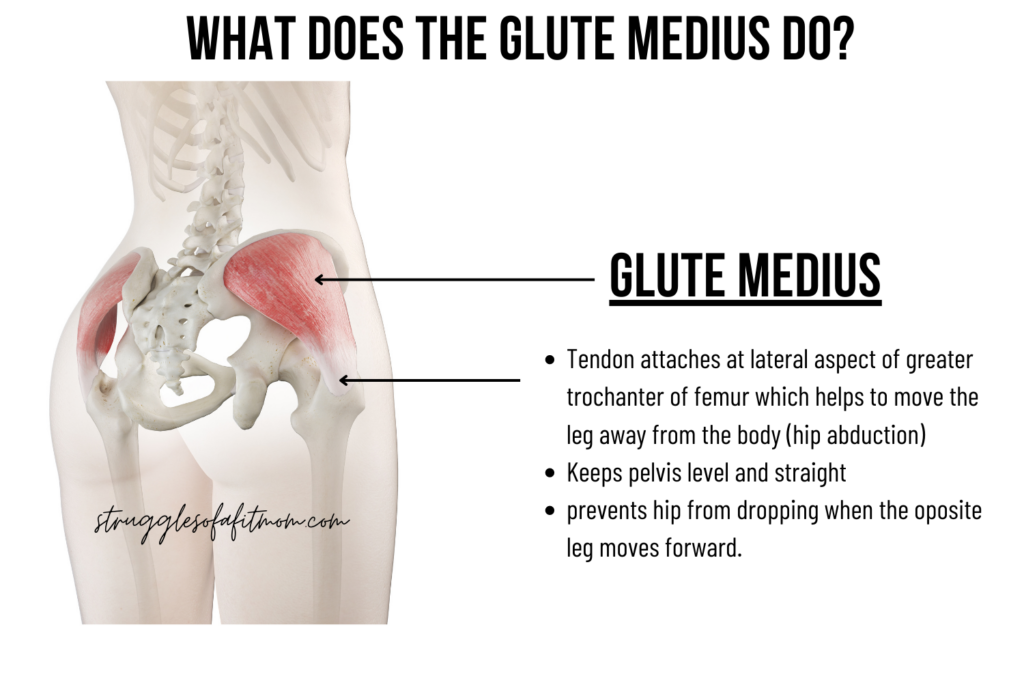
Today we are focusing specifically on the glute medius. This is the muscle that will give you that that lifted glute shelf you are seeking.
What Are The Benefits Of Strengthening The Glute Medius?
The glute medius is often overlooked because most people are more focused on the aesthetics of a rounder, bigger butt.
However, the benefits of strong glutes goes beyond size, shape and appearance.
Here are some of the important benefits of having strong glute medius muscles:
How To Build Bigger Upper Glute Muscles
I hear from so many women who are frustrated with their glute gains despite doing what they think are the best exercises.
Keep in mind that gaining lean muscle mass to achieve that “toned look” requires a much more comprehensive approach than just doing some glute focused exercises.
Here are a couple important factors when it comes to building muscle:
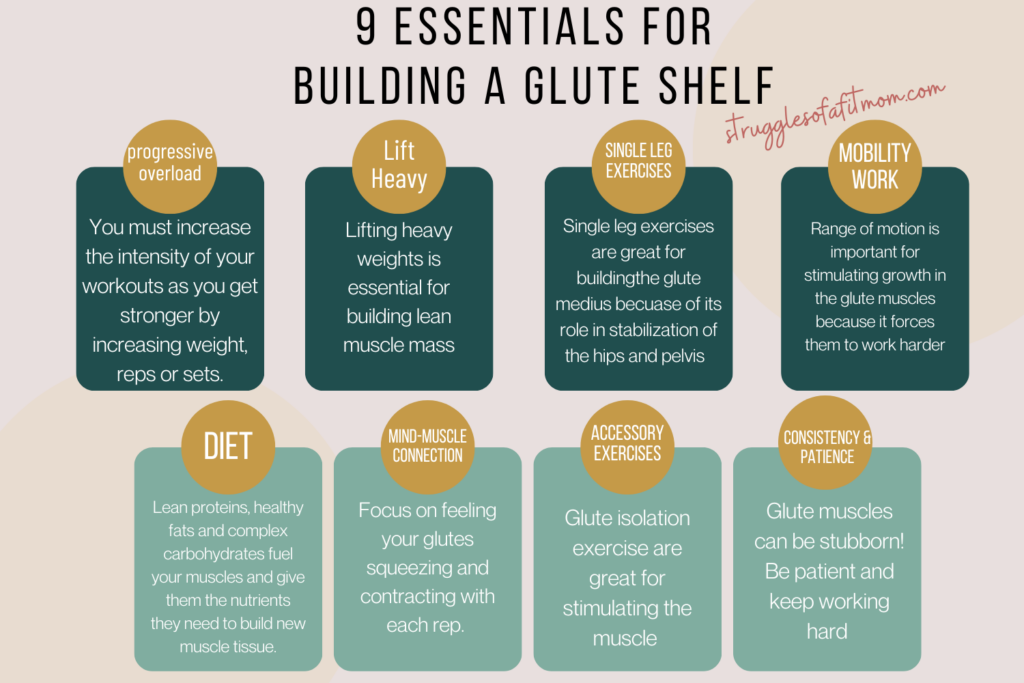
What Are The Best Upper Glute Exercises
The best way to get well developed glutes is to prioritize large compound movements with accessory bodyweight or glute band work.
Because one of the main jobs of the glute medius is hip stability, unilateral or single leg exercises are great for targeting this muscle.
Remember to challenge yourself by pushing for more reps or adding more weight as your body gets stronger.
The Best Upper Glute Exercises Using Weights
Curtsy lunge
- Stand with your feet hip-width apart. Place your hands on your hips or holding a set of dumbbells at your sides.
- Step your right foot behind your left leg and bend your knees to lower into a lunge position. Your left leg should be bent at a 90-degree angle, with your knee directly over your ankle. Your right leg should be extended behind you, slightly to the left of your front foot.
- Push through your left heel return to the starting position.
- Complete all reps on one foot before switching legs or alternate back and forth for the duration of the interval or reps.
Lateral Lunge
- Stand with your feet hip-width apart and your hands on your hips or holding a set of dumbbells at your sides or in front of your body.
- Take a large step to the right with your right foot as you bend your left knee to lower your body into a side lunge position. Your left knee should be bent at a 90-degree angle, with your left knee directly over your ankle. Your left leg should be extended straight out to the side. you with your left foot flat on the ground.
- Push through your left heel to return to the starting position.
- Complete all reps on one foot before switching legs or alternate back and forth for the duration of the interval or reps.
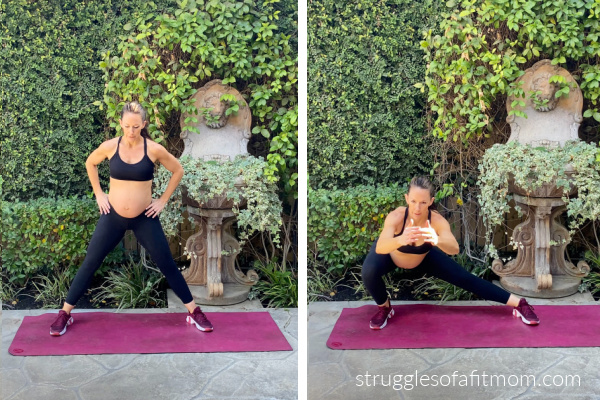
Bulgarian Split Squat
- Grab a pair of dumbbells and stand with your back facing a bench or another elevated surface. Place the top of your right foot on the surface behind you. You may need to hop your front foot to get into the correct position.
- Bend your left knee to lower your body down into a lunge position keeping your right foot on top of the bench. Lower until your left leg is bent to at least a 90-degree angle, with your left knee directly over your ankle.
- Push through your left heel to return to the starting position.
- Complete all reps on one foot before switching legs or alternate back and forth for the duration of the interval or reps.
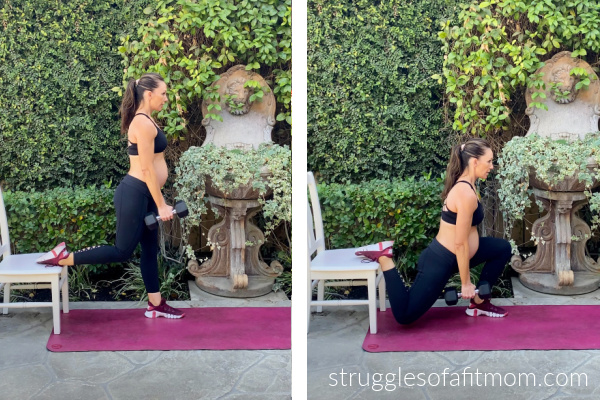
Sumo Deadlift
- Begin by standing in front of a barbell with your feet significantly wider than shoulder-width apart and point your toes slightly outward at a 45-degree angle. Keep your knees pointing this direction for the entire exercise.
- Bend at your hips and knees to grab the barbell with an overhand grip with your hands slightly closer than shoulder-width apart.
- Engage your lat muscles by drawing your shoulder blades down your back. Keep your back straight and chest up.
- Inhale and brace your core. To lift the weight, imagine you are pushing your feet through the floor as opposed to lifting the barbell. This will help keep your back straight.
- Using your glutes, not your back, slowly stand up straight, keeping the barbell close to your body and your arms straight.
- Once you are standing with the barbell at your hips, squeeze your glutes and pause for a moment then slowly lower the barbell back to the ground, bending at your hips and knees.
- Repeat the movement for the desired number of repetitions.
Hip Thrust
- Begin by sitting on the floor with your upper back resting against a bench just below your shoulder blades and place your feet flat on the ground with your knees bent.
- If you choose to use weights, place a barbell or dumbbell across your hips.
- On an exhale, engage your core to keep your back protected and straight. Keep your gaze looking forward or slightly down.
- Keeping your feet flat on the ground, squeeze your glutes to lift the weight up toward the ceiling. Imagine you are pressing your heels through the floor and raise your hips up until your body forms a straight line from your shoulders to your knees.
- Hold this position for 1-3 seconds, then slowly lower your hips back to the starting position.
- Repeat for the desired number of repetitions.
B-Stance Deadlift
The b-stance deadlift is a single leg isolation exercise that requires balance and stabilization from the glute medius.
The staggered stance allows for greater glute activation and isolation as well as improved hip stability if a single leg deadlift is too difficult.
- Begin by standing in a staggered position with your feet shoulder width apart and your right foot slightly in front of your left. The toes of your back foot should be in line with the heal of the front foot. You can do this either holding dumbbells or a barbell.
- The back foot is the support leg and the front leg is the working leg. Your back foot should have just your toes resting on the ground for support.
- With your core engaged, hinge at the hips to grab the weights.
- Keep your back straight by drawing your shoulders drawing down. Lift your chest up and push through the front foot to lift the weight off the ground.
- Once you reach the top, the working glute an extra squeeze then hinge at the hips to lower the weight back to the ground. Keep the barbell close to your legs and push your butt back behind you as if you were trying to press it into a wall.
- Repeat for the desired number of reps then switch legs.
Exercise tips:
- Keep your core engaged and back flat throughout the exercises to protect your back.
- Imagine pushing your hips back as you lower and pressing them forward as you lift.
The Best Bodyweight Exercises for the Upper Glutes:
Bodyweight exercises are a great place to start for building your foundation.
Marching Glute Bridge
- Begin on your back with your feet flat on the ground and your knees about shoulder width apart.
- Engage your core (think pelvic tilt) as you press your heels through the floor while squeezing your glutes to lift your hips toward the ceiling and into a bridge position.
- Now firmly engage your right glute to keep your pelvis straight. Lift your left foot off the ground and bring your knee toward your chest.
- If you can’t keep your pelvis straight, only lift your foot as high as you can without letting your hips dip from side-to-side.
- Lower your leg and repeat on the opposite side.
- Continue marching back and forth for the duration of the exercise.
- Focus on keeping your core tight and opposite glute engaged as you bring your knee up.
Clam Shell
- Begin on your right side with your knees bent at a 45 degree angel and head resting on your bottom arm. Your hips should be stacked to prevent them from sinking forward or falling back.
- Engage your core to slightly tuck your pelvis. Squeeze your top glute to open your knee toward the ceiling.
- All the movement should come from the glute and not the pelvis.
- Lower and repeat for all reps before switching sides.
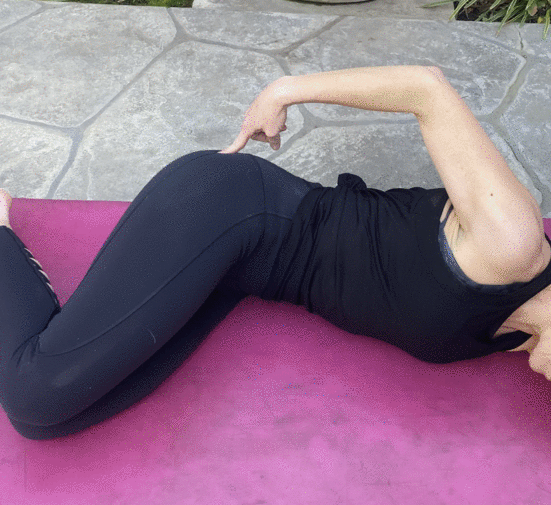
Side plank leg lift
This exercise strengthens the muscles in your glutes, hips, core as well as your upper body.
- Begin by lying on your right side in a straight line with your upper body propped up on your forearm. Keep your shoulders down away from your neck and your elbow directly below your shoulder with your hand flat on the ground for support.
- From here, engage your core and lift your hips up off the ground. Keep your feet flexed for support and lift your top leg straight up.
- Imagine you are pressing your bottom foot into the ground to engage your glutes for support.
- Hold for 3-5 seconds then lower.
- Repeat for the duration of the interval or for reps.
Exercise tips
- For an extra challenge, try holding your leg up for longer intervals.
- To modify, bend the bottom knee for a more stable foundation.
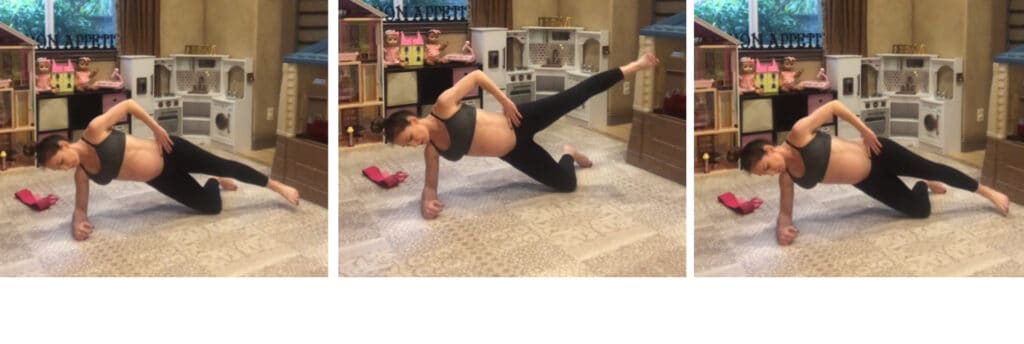
Side Lying Leg Abduction
- Begin on by lying on your right side with your body in a straight line. Your feet should be flexed and stacked on top of each other.
- You can place your bottom arm straight or bent on the floor to support your head.
- On an exhale, engage your core to slightly tilt your pelvis and slowly raise your top leg toward the ceiling.
- Use your glute to lift your leg keeping your foot flexed. Focus on leading with your heal.
- Hold at the top and on an inhale then slowly lower the leg down.
- Complete for the duration of the interval or reps then switch sides.
Exercise tips
- Keep your core tight and your body in a straight line to prevent any pressure on your low back.
- If you have trouble keeping your body straight, lay on your side with your back against a wall and gently press your leg against the wall as you lift.
- Avoid lifting your leg too high. Higher is not necessarily better in this exercise.
Hip Hike
- Begin by standing sideways on a stool or the bottom of a step. If you struggle with balance, make sure you hold onto something for support.
- Place your right foot so that your arch is in line with the edge of the step or stool and hang your left leg off the edge.
- Engage your core to slightly tuck your pelvis and allow your left hip and leg to drop towards the ground just far enough so it hovers over the ground and is not touching the floor.
- Do not bend your support knee to allow the foot to drop.
- Keeping the support leg as strong as possible, engage the glute of your support leg to bring your bottom leg up so that your legs are level with each other and your pelvis is in a straight line.
- Give your glute a squeeze at the top and then repeat, allowing your hip and leg to drop.
- Complete all reps before switching sides.
Exercise tips:
- It is very important to keep your core tight and your pelvis straight.
- It may be helpful to imagine pressing the heel of your support leg through the ground to engage the glute.
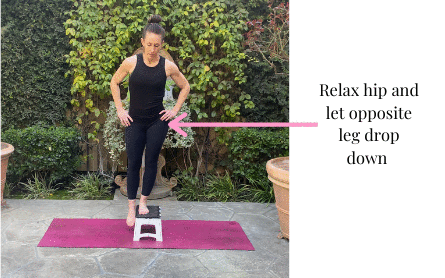
Single Leg Wall Squat
- Begin with your back against a wall with your feet slightly out in front of you.
- Arrange your feet so they are they are shoulder width apart for more support.
- On an exhale, engage your lower abdominal muscles and slide your back partway down the wall, ideally until your thighs are about parallel to the ground.
- Brace your core and engage your right glute for support as you lift your left leg up off the ground. You can either hover your foot a few inches off the ground or try extending it forward in front of you.
- Focus on using your core to keep your lower back pressed against the wall and squeezing your glute for support.
- Hold for a few seconds then place your left foot down and repeat on the opposite side.
- Continue alternating back and forth for the duration of the exercise.
Fire hydrant
- Begin on your hands and knees in a tabletop position with your shoulders above your wrists and hips over your knees.
- Keeping your core engaged, squeeze your glute as you lift one knee up and out to the side, keeping your knee bent at a 90-degree angle.
- Hold for a few seconds before lowering back down.
- Repeat for for duration of the interval or reps then repeat on the opposite side.
Single leg hip thrust
- Begin by sitting on the floor with your upper back resting against a bench just below your shoulder blades and place your feet flat on the ground with your knees bent.
- On an exhale, engage your core to keep your back protected and straight. Keep your gaze looking forward or slightly down.
- Squeeze your right glute to lift your hips off the ground until your body forms a straight line from your shoulders to your knees. Keep your left knee bent as you drive your hips up.
- Squeeze your glute and brace your core to prevent your hips from dipping side to side.
- Hold this position for 1-3 seconds, then slowly lower your hips back to the starting position.
- Repeat for the desired number of reps then switch sides.
Exercise notes
- Avoid pressing too high and hyperextending your lower back.
- Only lift as high as you can while keeping your core engaged.
- Core engagement is very important to help protect your low back.
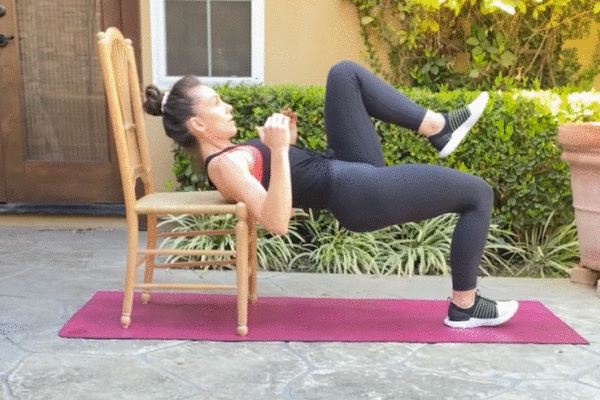
Side Lying Hip Raise
- Begin by resting on your right forearm in a side plank position with your knees bent at a 45-degree angle and stacked. Keep your left arm resting on top of your left hip.
- Engage your core to slightly tuck your pelvis to prevent your low back from arching.
- Keeping your knees in this bent position, press your bottom knee into the ground to lift your hips up off the ground.
- As you lift your hips up, simultaneously squeeze your bottom glute to press your hips forward and lift your top leg toward the ceiling keeping your knee bent.
- Focus on squeezing your glute to lift your hips up and slightly forward. But make sure to keep your core firmly engaged.
- Pause at the top for an extra glute squeeze then reverse the movement by slowly lowering your hips back down and slightly back.
- Repeat for the duration of the interval or for reps and repeat on the opposite side.
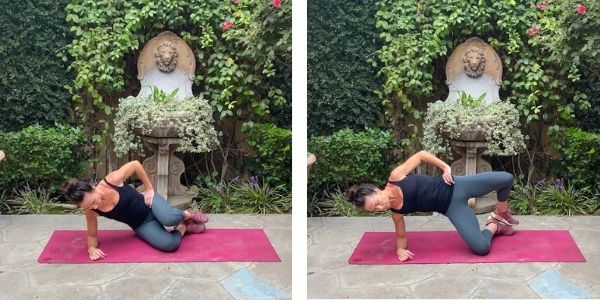
Deficit Reverse Lunge
- Stand on a bench, stool or sturdy chair with your feet together.
- Slowly step your right foot back while focusing on squeezing the glute to keep your knee and hips straight.
- Once you reach the bottom, push through your left heal to bring your right foot up.
- You can do all reps on one side or alternate back and forth. Make sure you keep your chest up and core engaged.
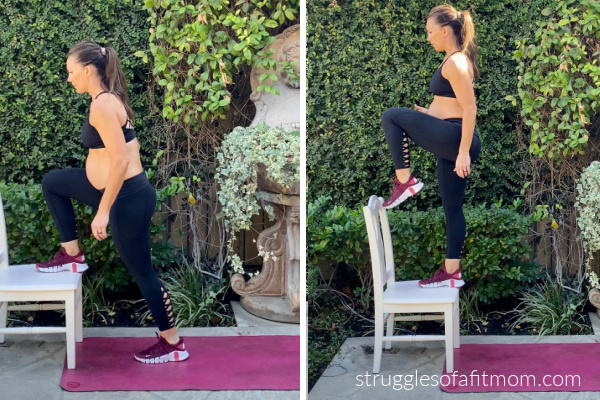
The Best Upper Glute Exercises Using Resistance Bands
Ideally these are incorporated into your workout as glute activation exercises or glute finishers and should not be prioritized over larger, compound exercises.
3-Way Seated Hip Abduction
- Begin by sitting on a the edge of a chair or bench with a mini band around your knees. Engage your core and sit with an upright posture.
- Hinge at your hips to lean your body slightly forward while maintaining a flat back.
- Keeping your feet flat on the ground, engage your glutes to press your knees out against the resistance band.
- Continue opening and closing your knees for the duration of the interval.
- Immediately after you complete your reps, lean your body back to neutral and repeat opening and closing your knees against the resistance band.
- Once you complete those reps, then immediately lean your body slightly back and repeat opening and closing your knees.
- There should be little to no break in between the three different positions.
- This exercise helps hit all three major glute muscles
Perform these three exercises as listed above with a resistance band around your knees.
- Banded clams
- Banded glute bridge
- Banded hip thrust
- Side Leg Lifts
- Banded Goblet Squat
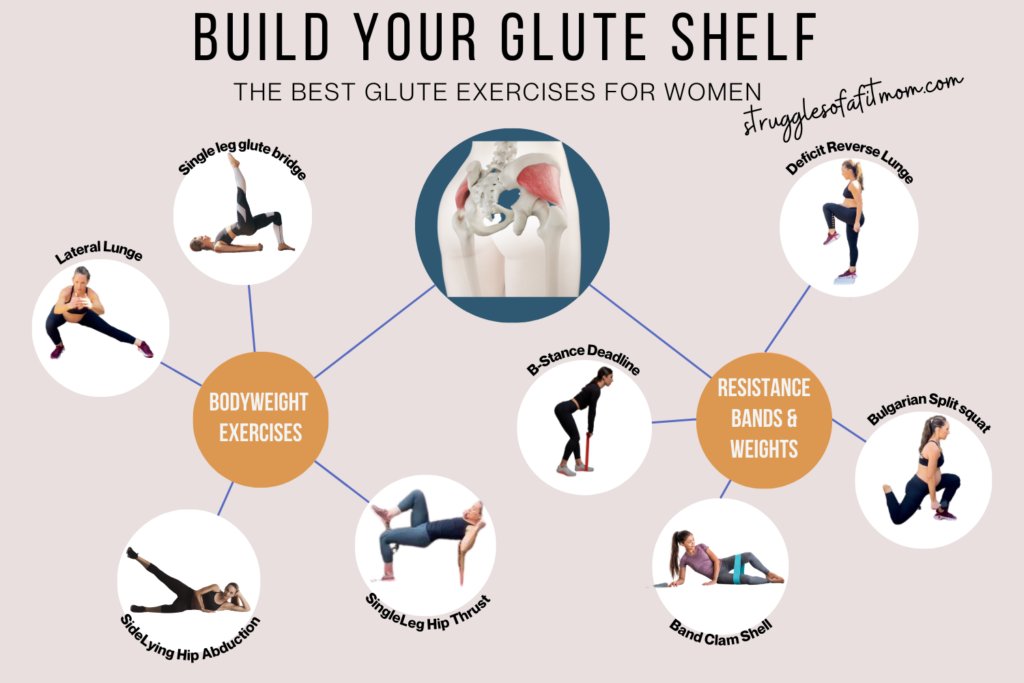
The Best Upper Glute Workouts
To maximize muscle gain in your glutes, you need to create a workout program that focuses on both compound and isolation exercises.
A well rounded training program also includes mobility work, core activation and HIIT cardio to help burn fat.
Here are 2 examples of an upper glute workout:
Warm-up: 10 minutes of foam rolling and dynamic stretching
A typical workout should include 2-3 sets of 8-12 repetitions for each exercise.
Sample Upper Butt Workout Day 1
What is a superset? A superset means you complete one set of the exercise then immediately move to the next exercise with little rest in between. If you are doing single leg exercises, complete one set on each leg then move to the next exercise and complete one set on each leg. Alternate between exercises for the number or sets listed. Then move onto the next superset.
| Exercise | Reps | Sets | Notes |
|---|---|---|---|
| Warm-up | 30 seconds each exercise | glute march clam shells plank high-to-low lunge | |
| Superset #1 Hip Thrusts Alternating curtsey lunge | 12-15 12-15 | 3 3 | slightly increase weight each set if possible. You may have to lower the number of reps |
| Superset #2 B-stance deadlift Bulgarian split squat | 12-15 12-15 | 3 3 | slightly increase weight each set if possible. You may have to lower the number of reps |
| Superset #3 Sumo Deadlift 3 way seated hip abduction | 12-15 12-15 | 3 | slightly increase weight each set if possible. |
| Burnout Side lying hip raise Side plank leg lift Marching glute bridge | 15 each leg 15 each leg 15 each leg | 4 |
Sample Upper Butt Workout Day 2
| Exercise | Reps | Sets | Notes |
|---|---|---|---|
| Warm-up | 30 seconds each exercise | glute march clam shells plank high-to-low lunge | |
| Superset #1 Hip Hike Deficit reverse lunge | 12-15 12-15 | 3 3 | complete all reps before switching legs. |
| Superset #2 Single leg hip thrust Bulgarian split squat | 12-15 12-15 | 3 3 | slightly increase weight each set if possible. You may have to lower the number of reps |
| Superset #3 Side plank leg lift Lateral lunge | 12-15 12-15 | 3 | slightly increase weight each set if possible. |
| Burnout Clam shell Fire hydrant Side leg lift Marching glute bridge | 20 each leg 20 each leg 20 each leg | 4 |
Other Frequently Asked Questions About Upper Glute Exercises
Unfortunately a lot of the best exercises to grow your glutes also works other muscles in your legs. However, there are some isolation exercises that focus on just the glutes such as side leg lifts, hip thrusts, fire-hydrants and seated hip abduction exercises with a resistance band.
These isolation exercises are not ideal for building a lot of muscle but they are great exercises to incorporate into your glute workouts.
Not everyone starts off with the same anatomy to build rock solid glutes.
This means strengthening and toning your glutes may be harder and take longer based on genetics.
For example, the angle of your sacrum and tilt of your pelvis affects the shape and size of your glutes.
Those with more of a slope in the sacrum will naturally have glutes that look a little more perky while those with a smaller slope will naturally have a flatter booty.
I recommended training your glutes two to three times per week in order to see the best results.
This will give your muscles enough time to recover in between workouts. It’s important to remember that everyone’s body is different, so the optimal training frequency for you may be slightly different than for someone else based on fitness level and genetics.
The amount of time it takes to grow your glutes will vary depending on a number of factors, such as genetics, diet, and exercise routine.
In general, it is possible to see some improvements in your glutes within a few weeks. However it can take several months or longer to see significant growth or changes.
For muscle growth and strength, you need to lift heavy weights in the rep range of 2-5 and train the muscle to failure or close to failure.
Heavy loads work best for compound exercises like squats, lunges, deadlifts and hip thrusts. You can also add drop sets which includes completing as many reps as possible with your max weight then reducing the load to complete more reps with no rest in between. You can continue reducing the load as many times as you need/want.
For isolation exercises such as clam shells or seated hip abductions, you will want to hit higher rep ranges of 20 reps or more to really fatigue the muscle. It is not possible to load these exercises enough so completing higher reps is more efficient.
More is not always better when it comes to training frequency and it will likely depend on your fitness level. If you are a more advanced lifter, I recommend about 4-5 different exercises per workout. However, if you are new to lifting, 2-3 different exercises is most likely enough for you to see results as long as you are really challenging yourself.
If you find your workouts too boring with only a few different exercises, experiment with super-setting or adding a few more exercises and see how your body responds.
Super-setting means alternating back and forth between two different exercises such as deadlifts with reverse lunges.
In most cases, your glutes are weak and/or soft from lack of proper activation and use.
We spend a lot of our day sitting which can essentially “turn off” the glute muscles and other muscles end up compensating.
Over time, this can lead to something called “glute amnesia”.
Final Thoughts on Upper Glute Training
Social media can make toning and reshaping your glutes frustrating and confusing with all the miss information.
Many so called “influencers” have genetics that have already predetermined the size and shape of their glutes.
While you can’t change your genetics, the good news is that anyone can see improvements in the size, shape and strength of the glutes with a combination of consistent, challenging and progressive workouts combined with a healthy diet.
Make sure to focus on a variety of compound and isolation exercises for your glutes, as well as mobility work, core activation and HIIT cardio.
Finally, make sure to listen to your body during your workouts, and don’t forget to rest and refuel in between workouts.
With a little hard work and dedication, you can be well on your way to a stronger, firmer and more perky glutes!
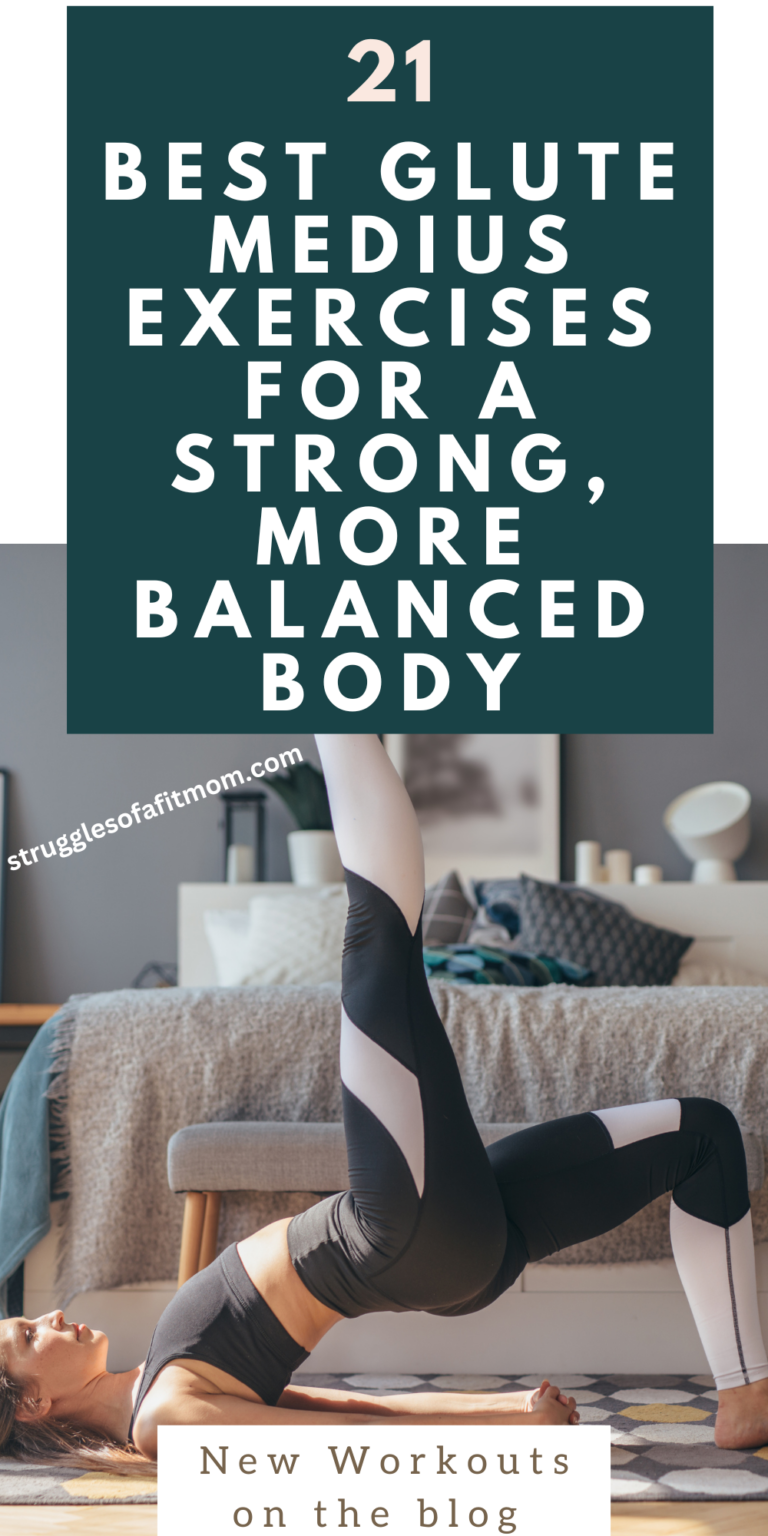
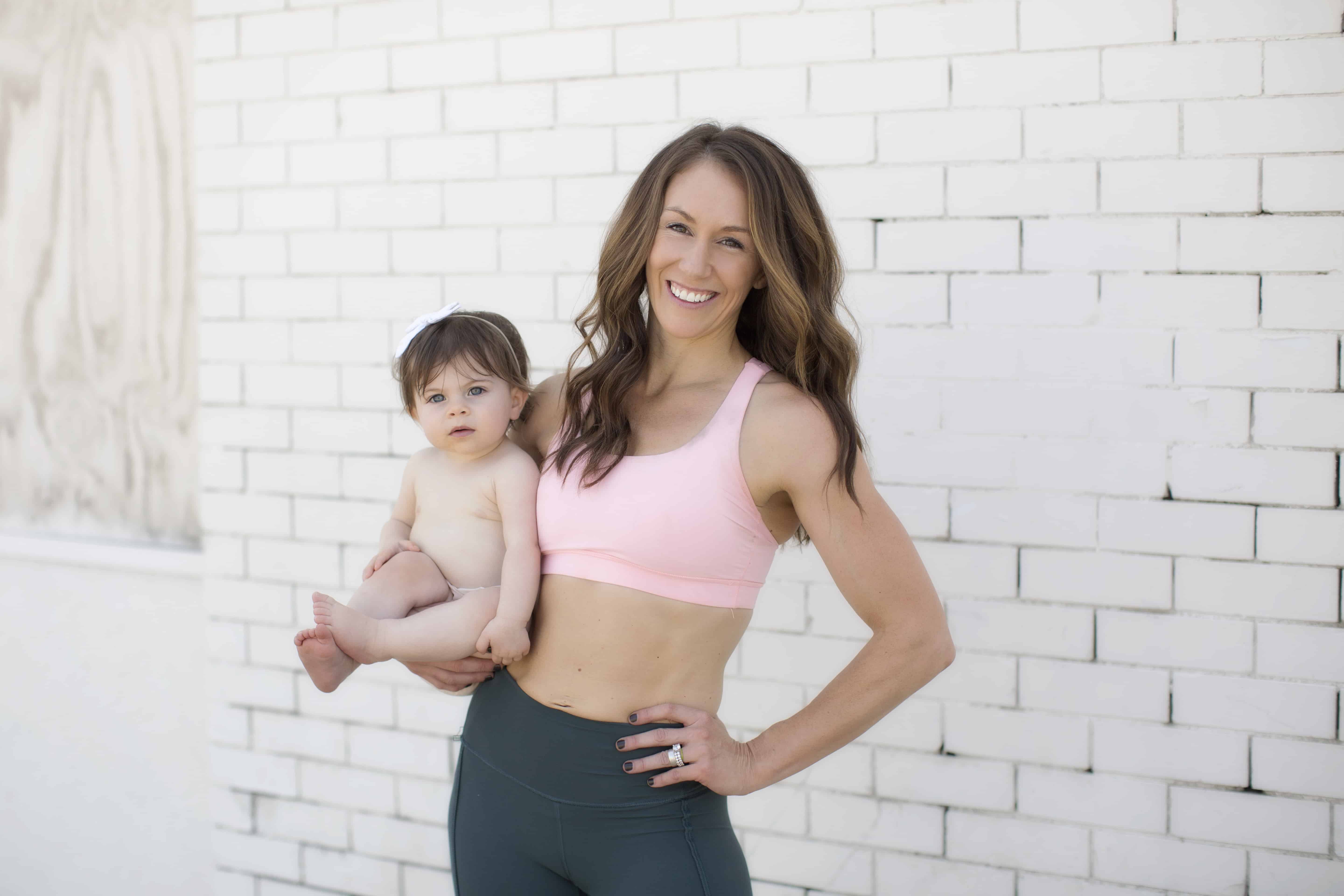
Brooke is a certified Prenatal and Postnatal Exercise Specialist with a Bachelors of Science degree in Kinesiology-Exercise Science. She is also a mom of 3 girls with more than 15 years of experience in health and fitness. Brooke’s goal at Struggles of a Fit Mom is to help motivate, educate and inspire other busy mamas who struggle with finding time, energy and motivation to take care of themselves in the chaos of motherhood.

